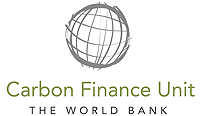Overview
The A/R Clean Development Mechanism (CDM) project activity, Facilitating Reforestation for Guangxi Watershed Management in Pearl River Basin, China, aimed to explore and demonstrate the technical and methodological approaches related to credible carbon sequestration and pilot the viability of enhancing the livelihoods of people and natural environment by facilitating reforestation activities in watershed areas along the Pearl River Basin. This A/R Clean Development Mechanism (CDM) project generated income for poor farmers/communities by enabling the carbon sequestered by plantations to act like a “virtual cash crop” for the local project beneficiaries who gained direct benefits from harvesting the plantation as well as from the sale of carbon credits. This in turn reduced the threats to natural forests. In addition, forest restoration in this area played a vital role in biodiversity conservation, soil and water conservation and poverty alleviation, while sequestering carbon dioxide from the atmosphere. The specific project objectives included:
- To sequester CO2 through forest restoration in small watershed areas and test and pilot how reforestation activities generate high-quality emission reductions in greenhouse gases that can be measured, monitored and verified;
- To enhance biodiversity conservation by increasing the connectivity of forests adjacent to nature reserves;
- To improve soil and water erosion control;
- To generate income for local communities.
Benefits
The umbrella project has addressed the closely inter-linked threats to the natural forests, watersheds and biodiversity in Guangxi Zhuang Autonomous Region through an integrated approach to managing all these natural resources at the landscape level. Its development and global environment outcomes have improved the supply, management, sustainability, and environmental conditions of the forest resources in Guangxi and conserved its globally significant biodiversity. This umbrella project has included four components: (i) expanding timber plantations to reduce the pressure on nature forests; (ii) increasing ecological forest cover in watershed areas; (iii) strengthening the management of nature reserves and (iv) enhancing institutional and management capacity for forestry sector.
